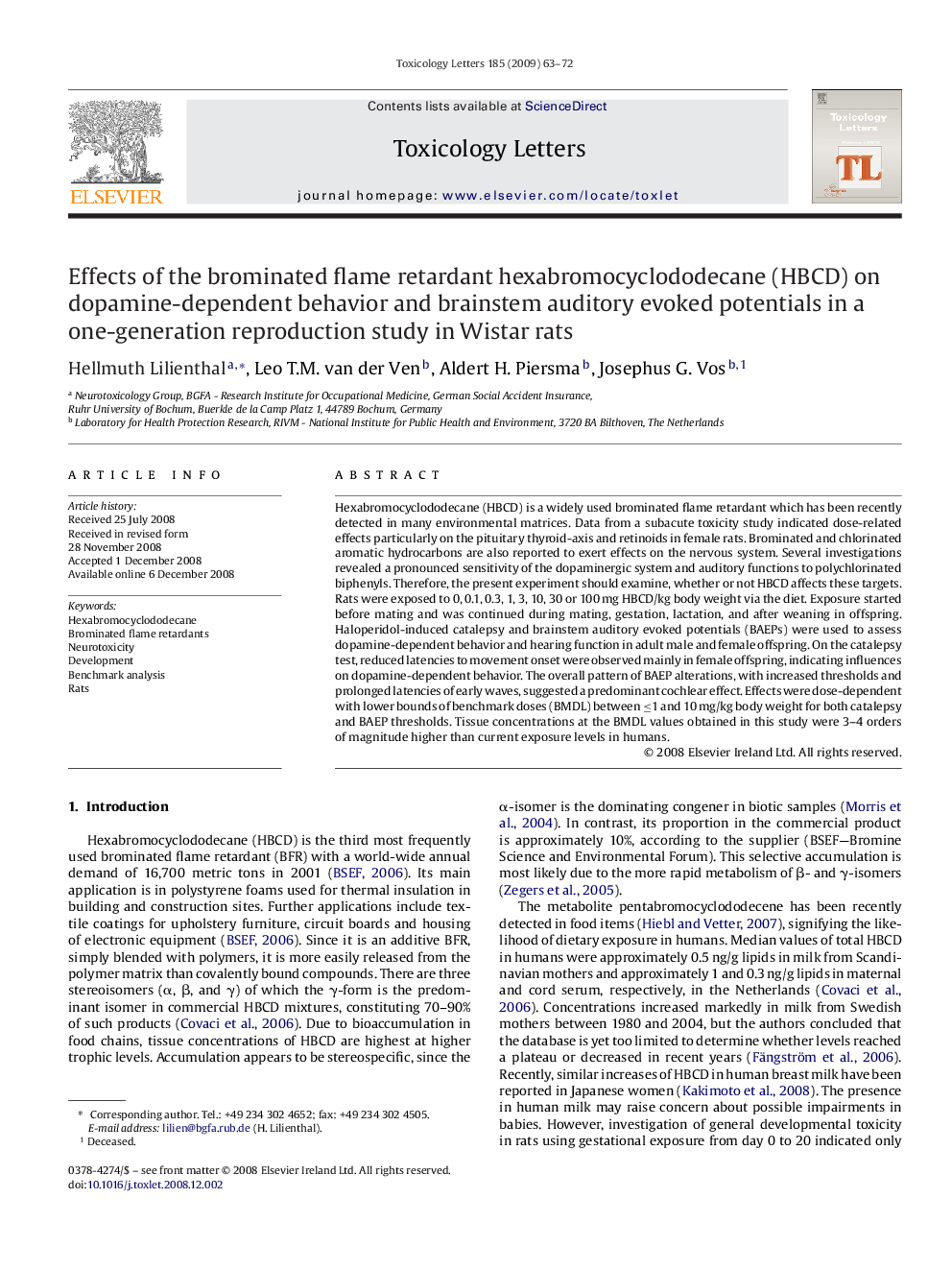| Article ID | Journal | Published Year | Pages | File Type |
|---|---|---|---|---|
| 2601146 | Toxicology Letters | 2009 | 10 Pages |
Hexabromocyclododecane (HBCD) is a widely used brominated flame retardant which has been recently detected in many environmental matrices. Data from a subacute toxicity study indicated dose-related effects particularly on the pituitary thyroid-axis and retinoids in female rats. Brominated and chlorinated aromatic hydrocarbons are also reported to exert effects on the nervous system. Several investigations revealed a pronounced sensitivity of the dopaminergic system and auditory functions to polychlorinated biphenyls. Therefore, the present experiment should examine, whether or not HBCD affects these targets. Rats were exposed to 0, 0.1, 0.3, 1, 3, 10, 30 or 100 mg HBCD/kg body weight via the diet. Exposure started before mating and was continued during mating, gestation, lactation, and after weaning in offspring. Haloperidol-induced catalepsy and brainstem auditory evoked potentials (BAEPs) were used to assess dopamine-dependent behavior and hearing function in adult male and female offspring. On the catalepsy test, reduced latencies to movement onset were observed mainly in female offspring, indicating influences on dopamine-dependent behavior. The overall pattern of BAEP alterations, with increased thresholds and prolonged latencies of early waves, suggested a predominant cochlear effect. Effects were dose-dependent with lower bounds of benchmark doses (BMDL) between ≤1 and 10 mg/kg body weight for both catalepsy and BAEP thresholds. Tissue concentrations at the BMDL values obtained in this study were 3–4 orders of magnitude higher than current exposure levels in humans.
